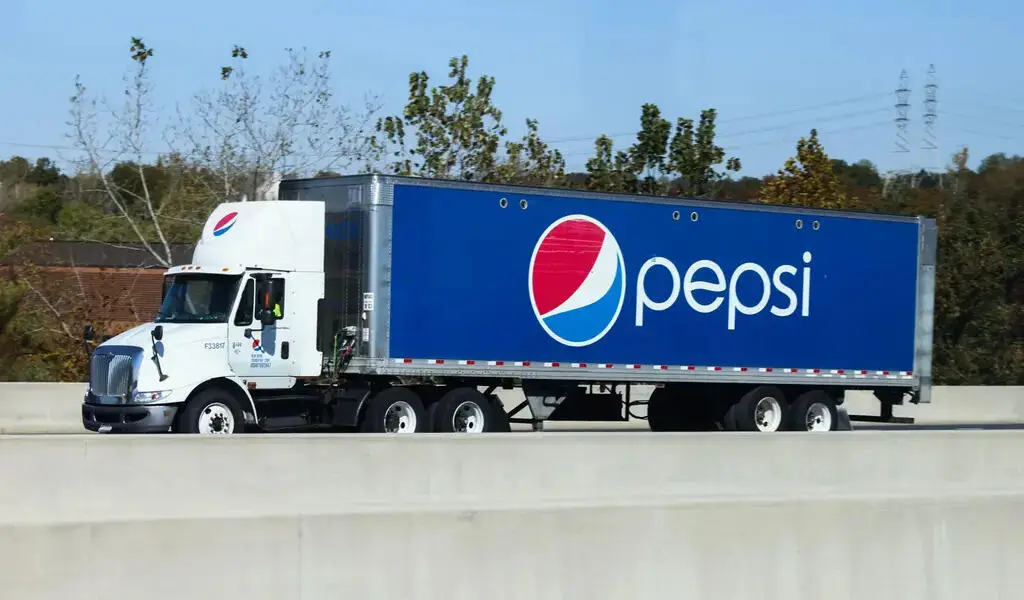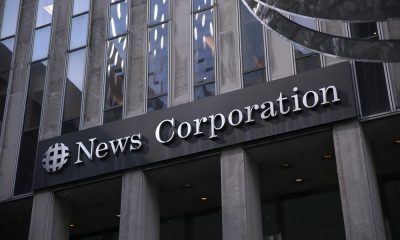Business
OpenAI Just Secured A Ton Of New Cash. Now It Needs To Wow Us

OpenAI might be the future of Silicon Valley, the next Google, the Great Disruptor, the slayer of late capitalist workplace tedium, etc.
However, as the business transitions from a nonprofit-led research lab to a for-profit AI powerhouse, now is a good time to examine OpenAI and its brilliant (if often tumultuous) leadership team. Because, if we believe OpenAI’s fundamental assumption that better-than-human artificial intelligence is unavoidable, and that it is the best brand to harness that potential, it’s worth pausing to ask the age-old business question: Really?!
Here is the deal: OpenAI, the startup behind ChatGPT, recently secured a $6.6 billion private investment round – the largest in Silicon Valley history — giving the fledgling company a $157 billion valuation, despite an uncertain route to profitability.
OpenAI Just Secured A Ton Of New Cash. Now It Needs To Wow Us
(For reference, public corporations with comparable valuations include Goldman Sachs and Pfizer.)
According to reports, OpenAI’s latest investors include major tech companies such as Microsoft (which has already invested more than $13 billion since 2019), Thrive Capital, Nvidia, Cathie Wood’s Ark Investment Management, and Japanese conglomerate SoftBank.
But it’s worth remembering that Apple was in talks to join that scrum, but it backed out at the last minute, according to The Wall Street Journal.
It was unclear why Apple, which did not respond to CNN’s request for comment, appeared to back out.
That being said, the iPhone maker does not engage in many strategic alliances.
But you don’t need an MBA to notice several red flags about OpenAI’s operations and the true worth of its technology.
According to the New York Times, the corporation appears to be spending significantly more money than it is coming in.
Let’s run some numbers:
OpenAI hopes to generate approximately $3.7 billion in revenue this year. (This revenue is mostly derived from ChatGPT premium subscriptions and the licensing of its technology to third-party developers.)
However, the Times estimates that it will incur costs of $5 billion.
(That’s not ideal, but it may not be a dealbreaker for a young, buzzy firm with big goals like OpenAI’s.)
Here’s where it gets a little wild:
Next year, OpenAI expects its income to more than triple to $11.6 billion. (To which I respond, with all due respect: Really?)
By 2029, it expects to generate $100 billion in revenue. This represents a more than 2,600% gain over the following five years. (Again: Seriously?!)
It’s unclear how, or if, OpenAI is striving to reduce its substantial cash burn. (The business declined to respond to The Times and CNN.)
When I asked Gil Luria, a managing director at D.A. Davidson, if my OpenAI pessimism was justified, he politely pushed back.
“The path from $0 in revenue to nearly $4 billion was clearly the fastest in history,” Mr. Luria added. “Nobody’s ever grown this fast at this scale, and they’re doing it again straight out of the gate with only the first few evolutions of their product set.”
Fair!
However, Luria stated that in order to reach $11 billion in revenue, “a lot of things have to go right, and very little can go wrong.”
What about that $100 billion prediction for 2029? “It’s completely unrealistic,” he admits. “It has nothing to do with reality.”
One approach for OpenAI to enhance its margins is to reduce costs. Even if it becomes extremely meticulous, the generative AI business faces an economic quandary: training and operating huge language models costs a lot of money, which is a structural cost that varies from prior tech booms, as CNBC reported last year.
In other words, the more people use ChatGPT, the more it costs to “compute,” as the business refers to it. Running these massive language models necessitates the use of numerous powerful semiconductors within massive data centers that consume a lot of electricity. It’s no surprise, however, that practically every major AI player wants to get their hands on good old-fashioned nuclear energy (as I discussed here earlier this week).
OpenAI’s challenges include more than just the economics of AI.
There’s also a Bravo-worthy soap opera going on with its founders, nearly all of whom have gone, and board of directors.
In 2015, CEO Sam Altman and ten others launched OpenAI as a nonprofit with the purpose of “building safe and beneficial artificial general intelligence for the benefit of humanity.”
OpenAI Just Secured A Ton Of New Cash. Now It Needs To Wow Us
Then it evolved into a hybrid: a for-profit firm led by a nonprofit board.
With 1,700 workers, it is now prepared to mainly abandon the nonprofit model in favor of a “public benefit corporation” — effectively a for-profit company with do-gooder intentions.
Several executives have left during this transition, raising concerns about Altman’s devotion to the firm’s initial objective in the face of, say, boatloads of cash.
What happens now? With new funding, OpenAI can focus on the next iteration of ChatGPT, which, according to Luria, is one of the Big Things that must go right for the company. Whatever OpenAI’s next product looks like, it must knock our socks off.
“If we’ve gone from a model that’s as smart as a high school student to GPT-4o being as smart as a PhD student, the next version must be getting us closer to a model that’s smarter than any human.” to make the investment worthwhile.”
SOURCE | CNN
Business
PepsiCo Reduces Revenue Projections As North American Snacks And Key International Markets Underperform.

(VOR News) – In the third quarter of this year, Pepsi’s net income was $2.93 billion, which is equivalent to $2.13 per share. This was attributed to the company.
This is in stark contrast to net income of $3.09 billion, which is equivalent to $2.24 per share, during the same period in the previous year. The company’s earnings per share were $2.31 when expenses were excluded.
Net sales decreased by 0.6%, totaling $23.32 billion. Organic sales increased by 1.3% during the quarter when the effects of acquisitions, divestitures, and currency changes are excluded.
Pepsi’s beverage sales fell this quarter.
The most recent report indicates that the beverage and food sectors of the organization experienced a 2% decline in volume. Consumers of all income levels are demonstrating a change in their purchasing habits, as indicated by CEOs’ statements from the previous quarter.
Pepsi’s entire volume was adversely affected by the lackluster demand they encountered in North America. An increasing number of Americans are becoming more frugal, reducing the number of snacks they ingest, and reducing the number of times they purchase at convenience stores.
Furthermore, Laguarta observed that the increase in sales was partially attributed to the election that occurred in Mexico during the month of June.
The most significant decrease in volume was experienced by Quaker Foods North America, which was 13%. In December, the company announced its initial recall in response to a potential salmonella infection.
Due to the probability of an illness, the recall was extended in January. Pepsi officially closed a plant that was implicated in the recalls in June, despite the fact that manufacturing had already been halted.
Jamie Caulfield, the Chief Financial Officer of Pepsi and Laguarta, has indicated that the recalls are beginning to have a lessening effect.
Frito-Lay experienced a 1.5% decline in volume in North America. The company has been striving to improve the value it offers to consumers and the accessibility of its snack line, which includes SunChips, Cheetos, and Stacy’s pita chips, in the retail establishments where it is sold.
Despite the fact that the category as a whole has slowed down in comparison to the results of previous years, the level of activity within the division is progressively increasing.
Pepsi executives issued a statement in which they stated that “Salty and savory snacks have underperformed year-to-date after outperforming packaged food categories in previous years.”
Pepsi will spend more on Doritos and Tostitos in the fall and winter before football season.
The company is currently promoting incentive packets for Tostitos and Ruffles, which contain twenty percent more chips than the standard package.
Pepsi is expanding its product line in order to more effectively target individuals who are health-conscious. The business announced its intention to acquire Siete Foods for a total of $1.2 billion approximately one week ago. The restaurant serves Mexican-American cuisine, which is typically modified to meet the dietary needs of a diverse clientele.
The beverage segment of Pepsi in North America experienced a three percent decrease in volume. Despite the fact that the demand for energy drinks, such as Pepsi’s Rockstar, has decreased as a result of consumers visiting convenience stores, the sales of well-known brands such as Gatorade and Pepsi have seen an increase throughout the quarter.
Laguarta expressed his opinion to the analysts during the company’s conference call, asserting, “I am of the opinion that it is a component of the economic cycle that we are currently experiencing, and that it will reverse itself in the future, once consumers feel better.”
Additionally, it has been noted that the food and beverage markets of South Asia, the Middle East, Latin America, and Africa have experienced a decline in sales volume. The company cut its forecast for organic revenue for the entire year on Tuesday due to the business’s second consecutive quarter of lower-than-anticipated sales.
The company’s performance during the quarter was adversely affected by the Quaker Foods North America recalls, the decrease in demand in the United States, and the interruptions that occurred in specific international markets, as per the statements made by Chief Executive Officer Ramon Laguarta.
Pepsi has revised its forecast for organic sales in 2024, shifting from a 4% growth rate to a low single-digit growth rate. The company reiterated its expectation that the core constant currency profitability per share will increase by a minimum of 8% in comparison to the previous year.
The company’s shares declined by less than one percent during premarket trading. The following discrepancies between the company’s report and the projections of Wall Street were identified by LSEG in a survey of analysts:
SOURCE: CNBC
SEE ALSO:
Old National Bank And Infosys Broaden Their Strategic Partnership.
Business
Old National Bank And Infosys Broaden Their Strategic Partnership.

(VOR News) – Old National Bank, a commercial bank with its headquarters in the Midwest, and Infosys, a firm that specializes in information technology, have recently entered into a strategic expansion of their link, which has been in place for the past four years.
This expansion is more likely to take place sooner rather than later, with the likelihood being higher.
For the purpose of making it possible for Old National Bank to make use of the services, solutions, and platforms that are offered by Infosys, the objective of this expansion is to make it possible for the bank to transform its operations and processes through the application of automation and GenAI, as well as to change significant business areas.
This lets the bank leverage Infosys’ services, solutions, and platforms.
Old National Bank Chairman and CEO Jim Ryan said, “At Old National, we are committed to creating exceptional experiences for both our customers and our fellow employees.”
This statement is applicable to Old National Bank. Infosys is carefully managing the business process innovations that it is putting us through, putting a strong emphasis on efficiency and value growth throughout the process to ensure that it is carried out efficiently.
This is a routine occurrence throughout the entire operation. Because of Infosys’ dedication to our development and success, we are incredibly appreciative of the assistance they have provided.
Old National has been receiving assistance from Infosys in the process of updating its digital environment since the year 2020, according to the aforementioned company.
Ever since that time, the company has been providing assistance. The provision of this assistance has been accomplished through the utilization of a model that is not only powerful but also capable of functioning on its own power.
Infosys currently ranks Old National thirty-first out of the top thirty US banks.
This ranking is based on the fact that Old National is the nation’s largest banking corporation.
It is estimated that the total value of the company’s assets is approximately fifty-three billion dollars, while the assets that are currently being managed by the organization are valued at thirty billion dollars.
Dennis Gada, the Executive Vice President and Global Head of Banking and Financial Services, stated that “Old National Bank and Infosys possess a robust cultural and strategic alignment in the development, management, and enhancement of enterprise-scale solutions to transform the bank’s operations and facilitate growth.”
This remark referenced the exceptional cultural and strategic synergy between the two organizations. Dennis Gada is the one who asserted this claim. This was articulated explicitly concerning the exceptional cultural congruence and strategy alignment of the two organizations.
We are pleased to announce that the implementation of Infosys Topaz will substantially expedite the transformation of Old National Bank’s business processes and customer service protocols. We are exceedingly enthusiastic about this matter. We are quite thrilled about this specific component of the scenario.
Medium-sized banks operating regionally will continue to benefit from our substantial expertise in the sector, technology, and operations. This specific market segment of Infosys will persist in benefiting from our extensive experience. This phenomenon will enable this market sector to sustain substantial growth and efficiency benefits.
SOURCE: THBL
SEE ALSO:
American Water, The Largest Water Utility In US, Is Targeted By A Cyberattack
States Sue TikTok, Claiming Its Platform Is Addictive And Harms The Mental Health Of Children
Qantas Airways Apologizes After R-Rated Film Reportedly Airs On Every Screen During Flight
Business
American Water, The Largest Water Utility In US, Is Targeted By A Cyberattack

The largest regulated water and wastewater utility company in the United States stated Monday that it had been the target of a cyberattack, forcing the company to halt invoicing to consumers.
American Water, The Largest Water Utility In US, Is Targeted By A Cyberattack
American Water, based in New Jersey and serving over 14 million people in 14 states and 18 military facilities, said it learned of the unauthorized activity on Thursday and quickly took precautions, including shutting down certain systems. The business does not believe the attack had an impact on its facilities or operations and said employees were working “around the clock” to determine the origin and scale of the attack.

According to their website, American Water operates over 500 water and wastewater systems in around 1,700 communities across California, Georgia, Hawaii, Illinois, Indiana, Iowa, Kentucky, Maryland, Missouri, New Jersey, Pennsylvania, Tennessee, Virginia, and West Virginia.
SOURCE | AP
-

 News3 years ago
News3 years agoLet’s Know About Ultra High Net Worth Individual
-
Entertainment1 year ago
Mabelle Prior: The Voice of Hope, Resilience, and Diversity Inspiring Generations
-

 Health3 years ago
Health3 years agoHow Much Ivermectin Should You Take?
-

 Tech2 years ago
Tech2 years agoTop Forex Brokers of 2023: Reviews and Analysis for Successful Trading
-

 Lifestyles2 years ago
Lifestyles2 years agoAries Soulmate Signs
-

 Health2 years ago
Health2 years agoCan I Buy Ivermectin Without A Prescription in the USA?
-

 Movies2 years ago
Movies2 years agoWhat Should I Do If Disney Plus Keeps Logging Me Out of TV?
-

 Learning2 years ago
Learning2 years agoVirtual Numbers: What Are They For?


